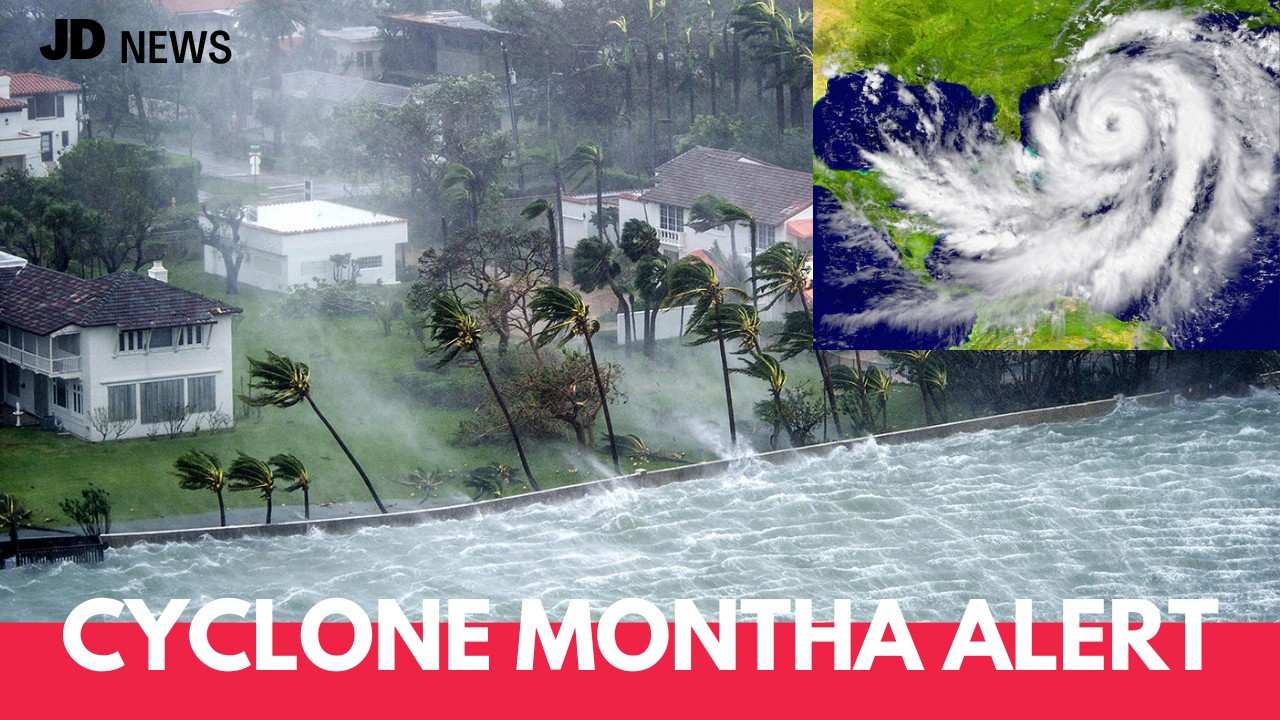Cyclone Montha Live Updates: Andhra Pradesh on High Alert as NDRF Swings Into Action

India's east coast is on high alert as Cyclone Montha intensifies over the Bay of Bengal, with meteorological reports indicating that Andhra Pradesh is the most vulnerable. The National Disaster Response Force (NDRF) has been activated as authorities prepare for likely landfall in the coming days.
Cyclone Montha is now heading northwestward and is expected to deliver heavy rain, strong gusts, and high sea tides on the beaches of Andhra and Odisha, according to the India Meteorological Department (IMD). Fishermen have been instructed not to enter the sea, and coastal communities have begun planning for evacuations and emergency shelters.
Disaster management teams have been dispatched in Visakhapatnam, Srikakulam, and East Godavari, where the storm's strength is likely to be highest. Power outages, roadblocks, and flooding dangers remain big worries as the system strengthens. The administration has advised residents to stay informed through official means and not share false information.
Current Situation & IMD Forecast
According to the IMD, Cyclone Montha (pronounced "Mon-tha") originated over the southeast Bay of Bengal and is presently over the west-central and adjoining southwest Bays of Bengal. As of October 27, the core was around latitude 13.3° N and longitude 84.0° E—roughly 420 km east of Chennai and 450 km south-east of Kakinada.
Montha is projected to build into a severe cyclonic storm by the morning of October 28, making landfall between Machilipatnam and Kalingapatnam, near Kakinada, in the evening or night of October 28. Wind speeds at landfall are expected to range between 90 and 100 km/h, with gusts reaching 110 km/h.
Heavy to very heavy rainfall is forecast along coastal Andhra Pradesh from October 27 to 29, with isolated exceptionally heavy showers of 20 cm or more probable. Storm surge and stormy seas might cause sea waves along the Andhra coast (from Nellore to Srikakulam) to reach 4.7 metres high.
Why Andhra Pradesh Is Especially Vulnerable
The coastal stretch between Machilipatnam and Kalingapatnam is directly in the projected landfall area. The low-lying coastal districts (Visakhapatnam, Srikakulam, and East Godavari) are already under infrastructure difficulties. Sea-state is likely to rapidly worsen, endangering fishing villages, marine operations, and embankments. As the storm worsens, restoring power and communications will become more difficult — which is why the NDRF and state emergency teams are fully prepared.
Public Safety Guidelines & What You Should Do
For Residents in Coastal/Low-lying Zones:
Follow official weather updates from the IMD and local disaster management organisations. If you reside in a particularly vulnerable area, be prepared to evacuate as instructions may come in rapidly. Andhra Pradesh has already established evacuation camps. Move critical documents, food, water, medicines, and mobile chargers to higher ground or a safe area. Avoid going into the sea, fishing, boating, or engaging in any maritime activity, especially until the system has passed. IMD/INCOIS has recommended fishermen to remain ashore until October 29.
Secure any loose things around your home (pots, furniture, and signboards) that the wind may turn into dangerous projectiles. Avoid going outside during the storm, and keep away from windows that face the wind. Unplug non-essential electrical appliances when safe. Post-storm outages are typical, and power spikes may occur once the grid is restored.
For General Public & Travellers:
If you have plans to visit the coastal districts of Andhra Pradesh or neighbouring Odisha/Tamil Nadu, check with airlines/railways first; certain services are being suspended as a precaution. For cars, highways may be closed due to water or fallen trees; only travel if absolutely essential, and avoid underpasses and low-lying roads.
During landfall, stay away from rivers, canals, beachfronts, and embankments since storm surge and high tides are extremely likely. Only rely on verified sources for updates; do not spread unconfirmed photographs or rumours that could cause panic.
What the Authorities Are Doing
The Andhra Pradesh government is running a round-the-clock war room through the Real-Time Governance Society (RTGS), in collaboration with district collectors. In high-risk areas, the NDRF, State Disaster Response Force (SDRF), and local emergency teams have been sent.
Over 400 relief camps have been established in coastal districts, and the evacuation of residents and cattle has begun. Schools and institutions in the impacted districts have been declared closed ahead of the storm.
Final Word
Cyclone Montha is building up to be a major weather event for India's east coast, particularly Andhra Pradesh. With the storm increasing and impact close, the combination of high winds, heavy rains, storm surge, and rough seas increases risk dramatically. While authorities are taking strong measures to protect lives and property, residents' cooperation — via preparation and attention to advisories — will be critical in lessening the effect. Stay aware, stay safe, and continue to follow updates from reliable sources.